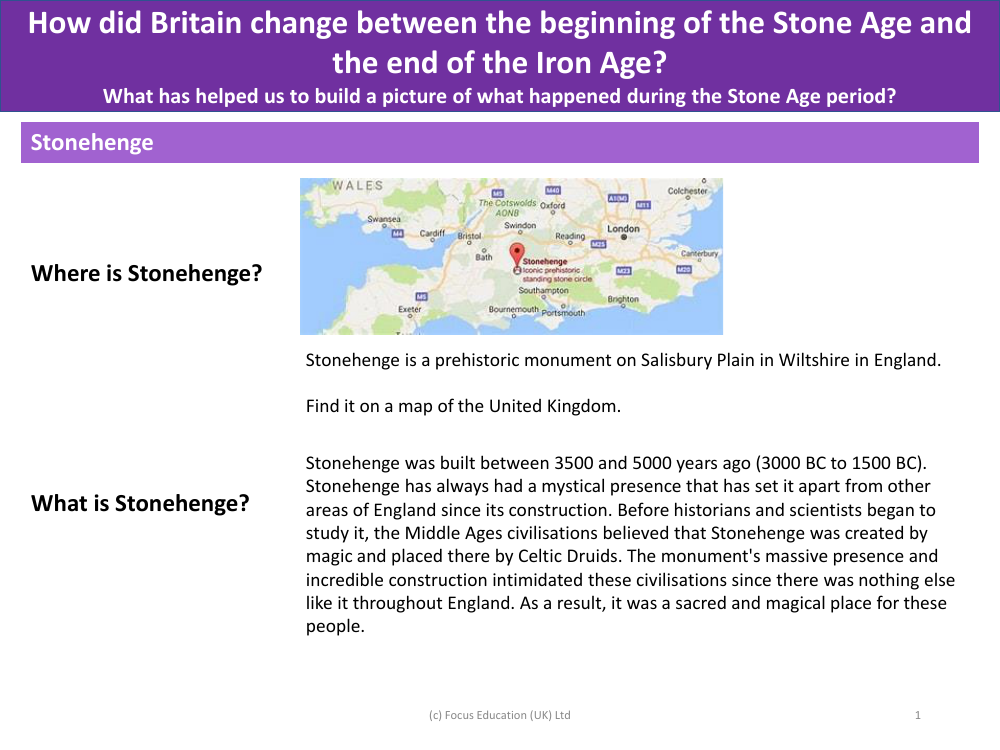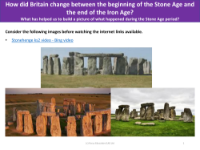Stonehenge - Info pack

Stonehenge is an iconic prehistoric monument located on Salisbury Plain in Wiltshire, England, and is one of the most famous sites in the United Kingdom. The construction of Stonehenge dates back to between 3500 and 5000 years ago, ranging from 3000 BC to 1500 BC. This monumental structure has captivated the imagination for centuries, with its mystical aura and unique presence. In the Middle Ages, it was believed that the monument was conjured by magic and erected by Celtic Druids. The sheer scale and the enigmatic construction of Stonehenge have long intimidated and fascinated, marking it as a sacred site for ancient civilisations.
Archaeologists and historians have pondered over Stonehenge's purpose, with early theories suggesting it was the work of Druids during the Iron Age. However, the discovery of bones predating even the Stone Age has reshaped these theories. The arrangement of the stones and the human remains found on site, which often include women and young children, have led to the widely accepted theory that Stonehenge was used for sacrificial rituals. Debates continue about its true purpose, with some experts proposing it was an astronomical observatory or a place of healing, while others believe it was a site for significant funeral ceremonies, particularly during the solstices. The ancient Britons are thought to have conducted special rituals at Stonehenge, especially on the longest and shortest days of the year, aligning with their belief in the profound influence of the Sun and Moon.







